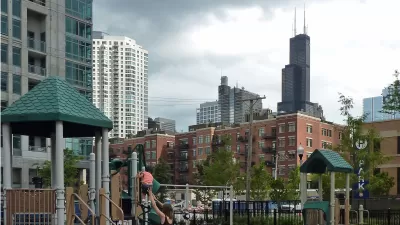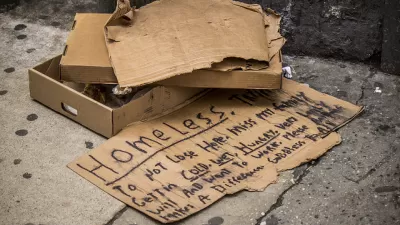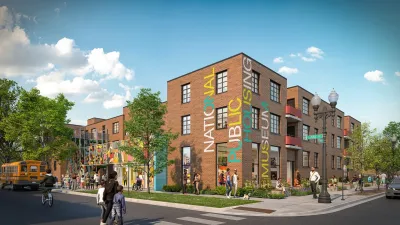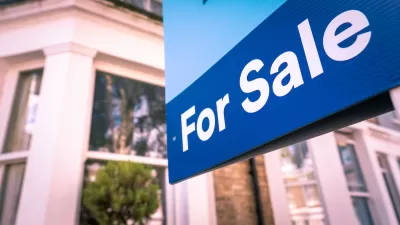A new report from the Urban Institute and the Metropolitan Planning Council looks at ways to fight perpetual segregation as Chicago's affluent white population booms.

In a trend that Tanvi Misra characterizes as "white flight, in reverse," estimates indicate that by 2030, "[Chicago's] white population will increase by 14 percent, and rich households making over $125,000 will grow by a striking 42 percent." Meanwhile, the black population will decline by 17 percent while lower-income Latinos move into surrounding suburbs.
To combat this reshuffled pattern of residential segregation, the report "offers specific policies to increase opportunity and options for residents living in historically disinvested neighborhoods, minimize the racial wealth gap, combat systemic racism, and improve health and safety. Improving access to affordable housing, according to the report, is a crucial step that helps achieve all these outcomes."
The report's recommendation to decrease local control over affordable housing proposals has provoked the strongest reactions so far, Misra says. Other recommendations include 10-year tax incentives for property owners who implement more affordable units and an expansion of the city's housing voucher program.
FULL STORY: What Will It Take to Desegregate Chicago?

Alabama: Trump Terminates Settlements for Black Communities Harmed By Raw Sewage
Trump deemed the landmark civil rights agreement “illegal DEI and environmental justice policy.”

Study: Maui’s Plan to Convert Vacation Rentals to Long-Term Housing Could Cause Nearly $1 Billion Economic Loss
The plan would reduce visitor accommodation by 25% resulting in 1,900 jobs lost.

Planetizen Federal Action Tracker
A weekly monitor of how Trump’s orders and actions are impacting planners and planning in America.

Wind Energy on the Rise Despite Federal Policy Reversal
The Trump administration is revoking federal support for renewable energy, but demand for new projects continues unabated.

Passengers Flock to Caltrain After Electrification
The new electric trains are running faster and more reliably, leading to strong ridership growth on the Bay Area rail system.

Texas Churches Rally Behind ‘Yes in God’s Back Yard’ Legislation
Religious leaders want the state to reduce zoning regulations to streamline leasing church-owned land to housing developers.
Urban Design for Planners 1: Software Tools
This six-course series explores essential urban design concepts using open source software and equips planners with the tools they need to participate fully in the urban design process.
Planning for Universal Design
Learn the tools for implementing Universal Design in planning regulations.
Caltrans
Smith Gee Studio
Institute for Housing and Urban Development Studies (IHS)
City of Grandview
Harvard GSD Executive Education
Toledo-Lucas County Plan Commissions
Salt Lake City
NYU Wagner Graduate School of Public Service





























